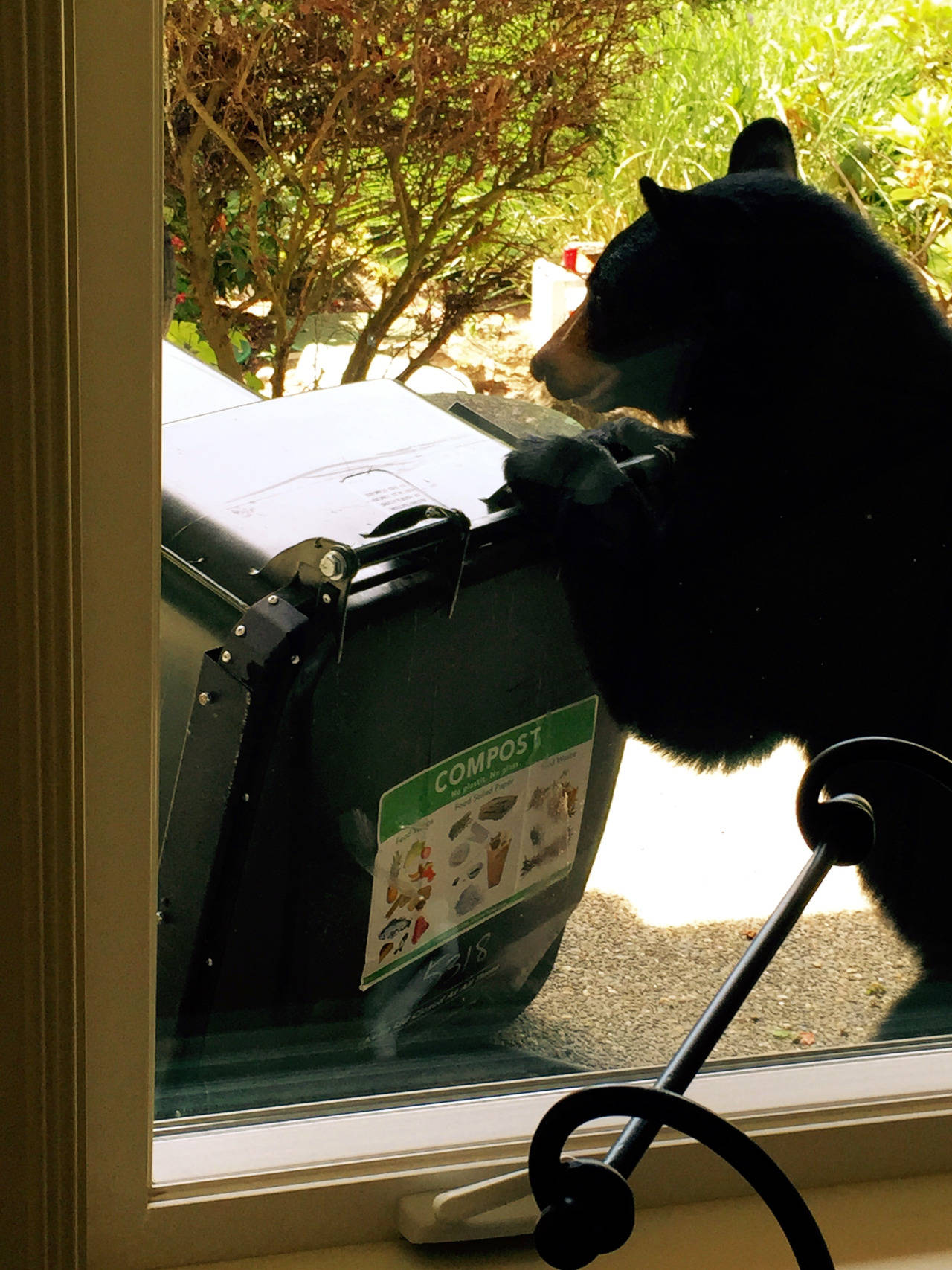It’s the time of year where Washington’s black bears are piling on the calories in anticipation for winter hibernation, and representatives from the Washington Department of Fish and Wildlife have offered tips on how to reduce and avoid bear encounters.
Areas in Grays Harbor and Pacific counties of high bear activity are Central Park, Ocean Shores and along the Long Beach peninsula. Residents in these areas should be aware of a higher chance for bear encounters, according to WDFW Wildlife Conflict Specialist Scott Harris.
“Where we live, we’ve got abundant wildlife and are surrounded by forest lands. We’ve got bears moving through all the time,” he said. “In Central Park you’ve got this wonderful wetlands out below that bears love and then industrial forest lands across the highway that the bears love. In between is this big playful area with all kind of wonderful things for bears to eat.”
Harris added that last year saw a high volume of bear encounters as a diminished berry crop led to bears venturing out of their comfort zone to find food elsewhere.
“Generally, you are going to have bears in the area where you have berries. They’d much prefer to be by themselves in the brush eating berries. But if those crops fail, they’ll become braver and more likely to go into where there are apple trees,” he said. “It generally gets worse when the berry crop fails. It’s good enough (this season) that we won’t have all the problems like we did last year, where we were getting countless phone calls, statewide.”
To reduce the attraction a hungry bear will have toward your property, Harris suggests reducing the sources of food around the house, including locking up garbage, removing bird feeders and harvesting apples from trees.
“In (the Twin Harbors), garbage is a really big (source of food) and bird feeders are also a top contender,” he said, adding bird feeders are “nutrient-packed wonders” that can provide a bear its desired 10,000 calories per day. “To them, it’s irresistible.”
Bears will also look for sources of food overlooked by many residents. A backyard barbecue with a greasy grill provides a source of nutrition for bears as does a beekeeper’s hive. Harris suggests residents keep the outside of their properties clean of food products and garbage and investing in an electric fence to keep bears away from beehives.
“Sometimes in these areas, bears are sticking around because there is a food supply,” he said. “Remove food sources, don’t put pet food or a box of apples on your back porch. … To a bear, that’s a meal.”
If you encounter a bear, Harris said the chances of a bear attack are extremely low so long as the bear does not feel cornered.
“Generally, yell at it, make some noise to try to scare it off,” he said. “If that doesn’t work and you feel threatened, call 911. … If you run into a situation where a bear is on a trail in front of you, make noise to let it know you are there and back away and let it do it’s thing. Don’t try to get closer to it to take a picture or a selfie.”
Follow these five tips to help avoid bear interactions this fall:
■ Store garbage cans in a garage or sturdy building until collection day. If a garbage can is left out, bears will find it. Put garbage out the morning of collection, not the night before.
■ Remove bird feeders (seed and liquid) from porches, trees and other accessible areas, and feed pets inside. These feeders can inadvertently become easy, high-calorie attractants for bears.
■ Pick and remove fruit from trees, even the highest branches. Bears love fruit and may climb trees to get it, possibly damaging valuable branches. Also be sure to remove fallen fruit from the ground and surrounding areas.
■ Do not intentionally feed bears, deer, elk or other wild animals. Bears have great memories, so once they find food, they’ll likely return and associate food with people. Anything a deer or elk will eat, a bear will eat too. Once bears learn to connect people with food, they will likely return and that increases the risk of a negative interaction.
■ Confine chickens and their feed in secured and covered enclosures or barns. Electric fencing is highly recommended for all chicken enclosures.
“Be pro-active to avoid attracting bears close to populated areas, it helps keep you and them out of harm’s way,” WDFW statewide bear and cougar specialist Rich Beausoleil said. “Following these simple steps can prevent virtually all negative black bear interactions.”
A bear’s natural diet consists of natural foods such as blueberries or huckleberries. Access to unnatural, high-calorie foods, such as garbage, birdseed, and hummingbird feeders, may delay a bear’s natural hibernation patterns.
Those who have tried the recommendations listed above but are still experiencing bear visitations should call 360-902-2936 to report concerns to WDFW enforcement. In an emergency, call 911.
More information as to how to avoid conflict with bears can be found on the WDFW’s webpage.
Please contact the WDFW Regional Office 6 at 360-249-4628 if you have questions regarding living with bears.


